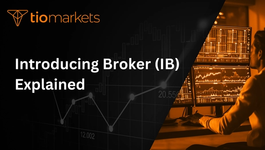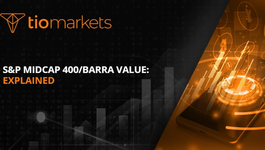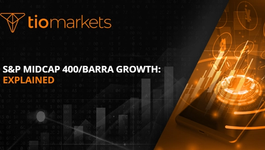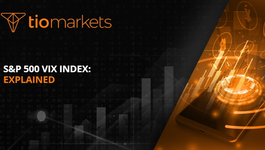Amex Composite Index: Explained | TIOmarkets
BY TIOmarkets
|June 28, 2024The Amex Composite Index, also known as the NYSE American Composite Index, is a comprehensive market index that encompasses all the stocks listed on the NYSE American exchange, formerly known as the American Stock Exchange (AMEX). This index, like other market indices, serves as a barometer for market performance and investor sentiment, providing a snapshot of the health and direction of the market.
Understanding the Amex Composite Index is crucial for traders and investors alike, as it provides a broad perspective on the performance of small to mid-cap equities in the United States. This index, while not as widely followed as the S&P 500 or the Dow Jones Industrial Average, is nonetheless a valuable tool for those interested in the smaller and often more volatile segment of the U.S. equity market.
History of the Amex Composite Index
The Amex Composite Index has a rich history that dates back to the 19th century. The American Stock Exchange, where the index originates, was initially a marketplace for stocks not listed on the New York Stock Exchange (NYSE). Over time, the exchange grew in size and importance, and in 1998, it introduced the Amex Composite Index to provide a comprehensive measure of its market's performance.
The index has undergone several changes since its inception. In 2008, the American Stock Exchange was acquired by NYSE Euronext, and the exchange was subsequently renamed NYSE American. Despite these changes, the index has continued to serve as a reliable indicator of the performance of the stocks listed on the exchange.
Calculation of the Amex Composite Index
The Amex Composite Index is a market capitalization-weighted index. This means that the weight of each stock in the index is determined by its market capitalization, or the total market value of its outstanding shares. The larger the market capitalization of a company, the greater its impact on the index's performance.
The index's value is calculated by adding up the market capitalizations of all its constituent stocks and then dividing by a divisor. The divisor is a proprietary figure that is adjusted regularly to account for changes in the index's composition, such as the addition or removal of stocks, stock splits, and other corporate actions.
Role of the Amex Composite Index in Trading
The Amex Composite Index plays a significant role in trading, particularly for those interested in small to mid-cap U.S. equities. The index provides a benchmark against which the performance of individual stocks, mutual funds, and exchange-traded funds (ETFs) can be compared.
Traders and investors use the index to identify trends in the market, assess the performance of their portfolios, and make informed investment decisions. For example, if the index is trending upward, it may indicate a bullish market for small to mid-cap stocks, suggesting potential investment opportunities.
Trading Strategies Based on the Amex Composite Index
There are several trading strategies that can be based on the Amex Composite Index. One common strategy is index tracking, where a trader invests in a portfolio of stocks that mirrors the composition of the index. This strategy aims to achieve a return that closely matches the performance of the index.
Another strategy is index arbitrage, which involves taking advantage of price discrepancies between the index and its constituent stocks or related derivatives. This strategy requires sophisticated trading systems and a deep understanding of the market.
Limitations of the Amex Composite Index
While the Amex Composite Index is a valuable tool for traders and investors, it is not without its limitations. One limitation is that it only includes stocks listed on the NYSE American exchange. Therefore, it does not provide a complete picture of the U.S. equity market, which includes stocks listed on several other exchanges.
Another limitation is that the index is market capitalization-weighted, meaning that it is heavily influenced by the largest companies in the index. As a result, the performance of smaller companies, which make up a significant portion of the index, may not be adequately reflected in the index's performance.
Overcoming the Limitations
Traders and investors can overcome these limitations by using the Amex Composite Index in conjunction with other market indices. For example, they can compare the performance of the index with that of the S&P 500 or the Russell 2000 to gain a more comprehensive view of the market.
Furthermore, they can use other types of indices, such as equal-weighted or fundamentally-weighted indices, to complement the market capitalization-weighted Amex Composite Index. These indices give equal weight to all companies or weight companies based on fundamental factors, respectively, providing a different perspective on the market.
Conclusion
The Amex Composite Index is a valuable tool for traders and investors interested in the small to mid-cap segment of the U.S. equity market. Despite its limitations, the index provides a useful benchmark for assessing market performance and making investment decisions.
By understanding the history, calculation, and role of the Amex Composite Index in trading, as well as its limitations and how to overcome them, traders and investors can make more informed decisions and potentially enhance their trading performance.
Start Trading with TIOmarkets
Ready to dive into the dynamic world of trading with a focus on the small to mid-cap U.S. equity market? Join TIOmarkets, a top-rated forex broker offering a robust online trading platform. With over 170,000 accounts opened across more than 170 countries, we provide traders access to over 300 instruments across 5 markets, including Forex, indices, stocks, commodities, and futures, all with low fees. Enhance your trading skills with our comprehensive suite of educational resources and step-by-step guides. Don't miss the opportunity to trade effectively and efficiently. Create a Trading Account today and start your journey with TIOmarkets.

Risk disclaimer: CFDs are complex instruments and come with a high risk of losing money rapidly due to leverage. You should consider whether you understand how CFDs work and whether you can afford to take the high risk of losing your money. Never deposit more than you are prepared to lose. Professional client’s losses can exceed their deposit. Please see our risk warning policy and seek independent professional advice if you do not fully understand. This information is not directed or intended for distribution to or use by residents of certain countries/jurisdictions including, but not limited to, USA & OFAC. The Company holds the right to alter the aforementioned list of countries at its own discretion.
Join us on social media

Behind every blog post lies the combined experience of the people working at TIOmarkets. We are a team of dedicated industry professionals and financial markets enthusiasts committed to providing you with trading education and financial markets commentary. Our goal is to help empower you with the knowledge you need to trade in the markets effectively.





